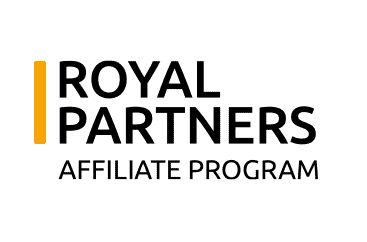Affiliate marketing has become one of the most popular ways for bloggers, influencers, and content creators to monetize their platforms. At the heart of this system are affiliate links, which enable businesses to track referrals and reward marketers for driving sales or conversions.
If you’re looking to get into affiliate marketing, understanding how these links work, where to use them, and how to optimize their performance is crucial. In this guide, we’ll break down everything you need to know about affiliate links, including how they operate, best practices—and potential challenges you should be aware of.
Understanding affiliate links and how they work
An affiliate link is a unique URL that contains a tracking code to identify the affiliate who referred a customer to a brand’s website. When someone clicks on this link and makes a purchase (or completes an action like signing up for a trial or newsletter), the affiliate earns a commission.
These links are generated by affiliate programs or networks, and are designed to monitor user activity, ensuring the correct affiliate gets credit for the sale.
The process is relatively simple. After signing up for an affiliate program, you receive a unique tracking link. You can then share this link across various platforms, including blogs, social media, email newsletters, and YouTube descriptions.
When a user clicks the link, a cookie is stored in their browser, allowing the affiliate program to track their activity for a specified period. If the user makes a purchase within the cookie’s lifespan, the affiliate is rewarded with a commission. Some programs offer commissions on all purchases made during the cookie window, while others only count the specific product linked in the referral.
Types of affiliate links and their uses
Affiliate links can take different forms, depending on the tracking method and link structure. Some of the most common types include:
- Direct Affiliate Links
These lead directly to the merchant’s website without additional redirects.
Example: https://www.merchant.com/product?ref=affiliateID
- Cloaked Links
These are masked to make them cleaner and more user-friendly.
Example: https://www.yoursite.com/go/product redirects to the affiliate link.
Cloaking can be done using plugins like Pretty Links or ThirstyAffiliates for WordPress users.
- Shortened Links
Some affiliates use URL shorteners like Bitly to create concise, shareable links.
Example: https://bit.ly/3Xyz123
- Coupon Code Tracking
Some affiliate programs track commissions using unique coupon codes instead of links. These are particularly useful for influencers promoting on Instagram, TikTok, or offline channels.
Best practices for using affiliate links effectively
Using affiliate links strategically can make a BIG difference in how much revenue you generate, and, above all else, the most effective approach is generally to integrate them naturally within content. Instead of stuffing links randomly, try to incorporate them into product reviews, tutorials, or comparison articles, where they actually add real value.
For example, if you run a travel blog, linking to a booking platform when discussing hotel recommendations is an organic and helpful way to encourage clicks.
Another key consideration is transparency. Most developed countries have laws stipulating that affiliates must disclose their relationships with brands—and this means you need to inform your audience when you’re using affiliate links.
Take a look around Affiverse’s website and you’ll see these on some of our posts. The exact wording can differ, but it can be something as simple as:
“This article contains affiliate links. If you purchase through these links, I may earn a commission at no extra cost to you.”
Placement is also really important when it comes to maximising conversions. Instead of hiding affiliate links at the bottom of an article, consider placing them in areas where they are more likely to attract attention, such as within call-to-action buttons or product comparison tables. Experienced affiliates will also test difference placements—often running split tests to find the optimal space to place then.
You should also make sure to track your affiliate links’ performance, as this is crucial for optimising your efforts in the long run. Thankfully, most of the best affiliate programs allow you to access detailed analytics that show metrics such as click-through rates and conversions. You can also use tools like Google Analytics and UTM parameters to gain deeper insights into how your audience interacts with your links.
Final thoughts
Affiliate links are the core of any successful affiliate marketing strategy, and they allow content creators and businesses to earn commissions by recommending products and services. Understanding how they work, where to use them effectively, and how to track performance is really important if you want to maximise your earnings from using them.
However, using affiliate links effectively is only half the battle. If you’re promoting below-par products and services, or aren’t provided the right tools to track and optimise your campaigns, you’re always going to be fighting an uphill battle.
That’s why, here at Affiverse, we’ve compiled one of the world’s most comprehensive partner directories. Here you’ll find a range of suppliers, affiliate programs, affiliate entrepreneurs and service providers that support digital marketing growth—all of which have been hand-vetted by our team of affiliate marketing experts.
Plus, if you want to make sure you’re always up to date and staying ahead in the affiliate world, you’ll also want to consider joining the Affiverse newsletter. Inside, you’ll find expert insights, the latest affiliate marketing trends, and strategies to help you grow your affiliate business!




















